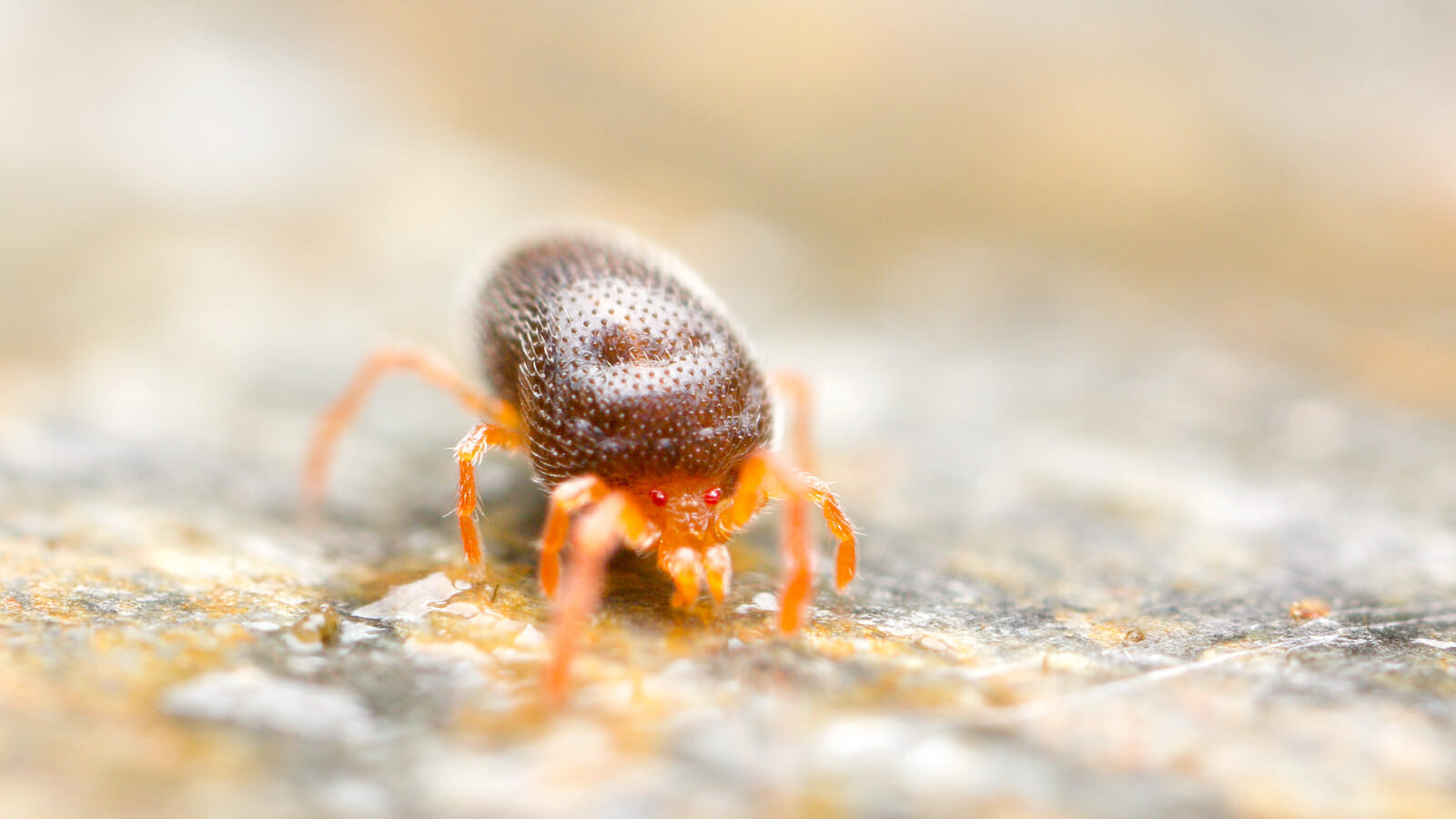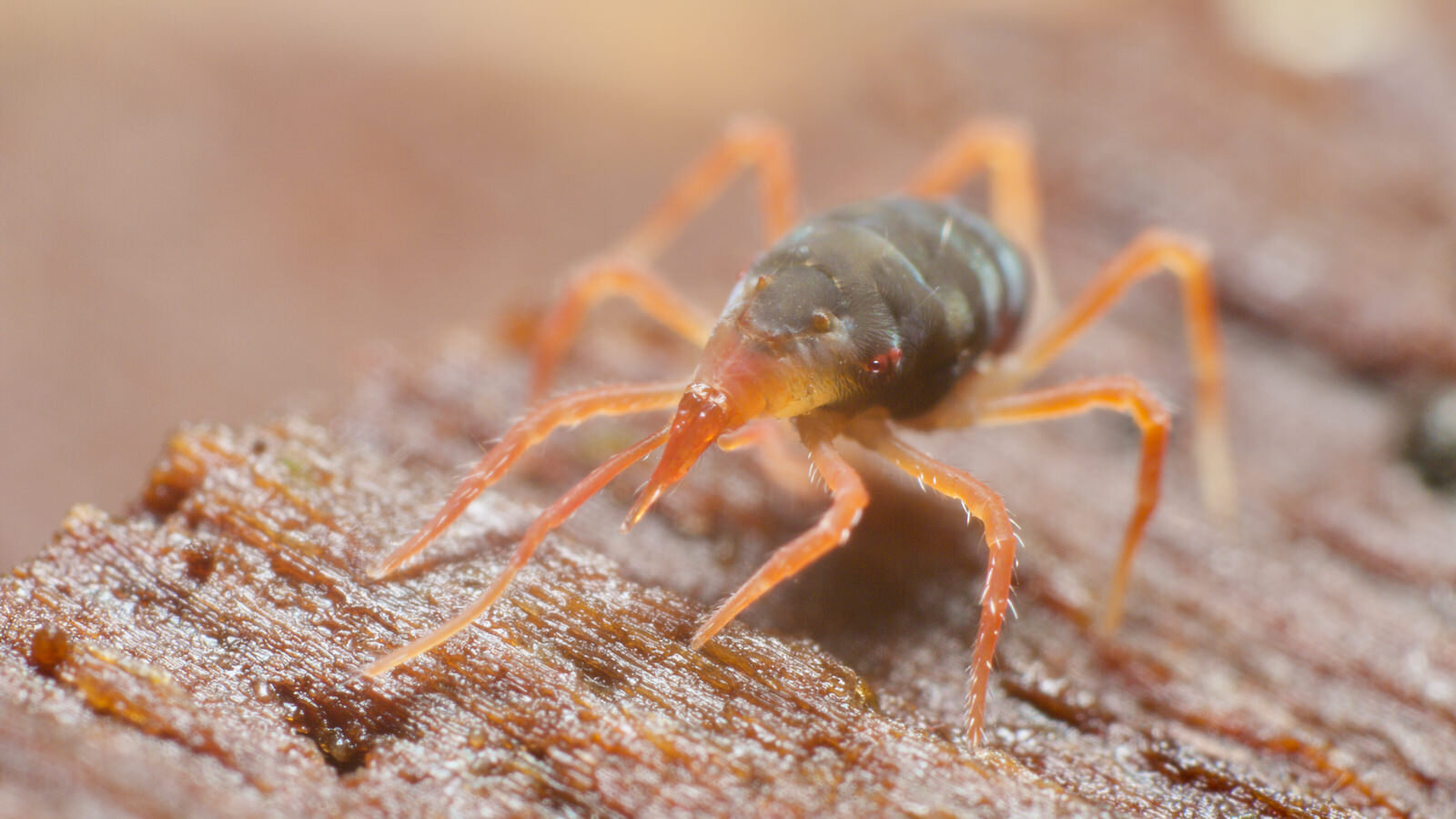
Prostigmata
pest and predator
The suborder Prostigmata (order Trombidiformes), includes the many families of spider mites, velvet mites, gall mites and snout-nosed mites that terrorise plants and other invertebrates. Prostigmatans are one of the most diverse groups of mites, and the most colourful apart from Opilioacarida. Excepting a few mite families, they have very little sclerotisation and usually have eyes. As the name suggests, the stigmata or spiracles are hidden at the front of the head, in the middle of the mouthparts or to the side.
All the major mite plant pests are prostigmatans. Others are predatory or scavengers.
A prostigmatan mite, Paratarsotomus macropalpis, is one of the fastest terrestrial animals alive, relative to its size. At 0.7mm big, it can run at three hundred and twenty two body lengths per second, that's 0.225 metres per second. An equivalent cheetah would need to be running at 2052 km/h . That's really, really fast.
Some, like the Eupodidae are fungivorous and have distinctive, ever-moving, elongated front legs that act as feelers, as well as serving as a possible deterrent to predators. They spend their days wandering amongst the fruiting bodies of micro fungi, all laid out like a smorgasbord in front of their chelicerae. When evening comes, they stand together in fungal devotional groups, worshipfully flicking their front legs in the stillness as the sun goes down. It's something I've noted numerous times in the UK, Canada, Australia and New Zealand. It's incredibly charming.
A lone Europodidae, feeding. East Portlemouth, S Devon UK Aug 2016
Some members are parasitic in their larval form- the protelean parasites of Parasitengona, like chiggers/harvest mites. Yet others are fully fledged parasites, like Demodex, the exploding follicle mite, mentioned earlier or some family members of Polapolipidae that are parasitic on grasshoppers and beetles. Others are phoretic, like some family members of Scutacaridae.
Parasitengona is a cohort of Prostigmata and contains nearly all of the protelean mites, including the velvet mites, the largest of the mites. It also includes Hydrachnidia, the group of mites that are aquatic. They pester fresh and salt water creatures, in case they felt left out from the fun and games.
Parasitengona has one of the most complex life cycle of all the mites.
Six-legged larval form of Riccardoella oudemansi, the slug mite. East Pennard, Somerset, UK Nov 2016
The egg hatches into an immobile pre-larva, which, after a few hours or longer, moults, emerging usually as a parasitic, six-legged larva.
The larva then ambles off in search of a host, and once found, attaches itself, sometimes for months, before finally dropping off. It then hides in the soil, becoming a calyptostatic protonymph. This could be seen as an equivalent of a insect's chrysalis, from which the deutonymph emerges transformed, an active, free-living predator. It now also has a lovely pair of extra legs.
After a little while longer, the mite then enters a secondary calyptostase, transforming yet again into an adult form, ready to lightly and happily suck on plants.. Like I said, complex.
An adult Trombididae with a deutonymph of the same species, doing what it does. Lamington National Park, Queensland, Australia, May 2016
Bark fly with larval mite passengers, Montagu, NW Tasmania, December 2015
























